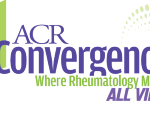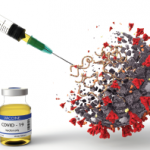Although not an RA study, this study suggests that MTX and perhaps even some biologics may result in a suboptimal vaccine response. Although humoral responses (e.g., anti-spike antibody) appeared sufficient, measuring T cell response is likely important to assure that patients are adequately protected against SARS-CoV-2.
Abstract L17: Additional heterologous versus homologous booster vaccination in immunosuppressed patients without SARS-CoV-2 antibody seroconversion after primary mRNA vaccination: A randomized controlled trial9 Research by Bonelli M, et al.
Building on the theme of how to best manage patients who may have had a poor response to vaccination, this late-breaking abstract reported results on patients receiving rituximab who did not seroconvert following the second mRNA vaccination with either Pfizer or Moderna. These individuals were randomized to receive a supplemental dose with the same mRNA or a vector vaccine (ChAdOx1 nCoV-19, Oxford-AstraZeneca). Seroconversion rates at week 4 were numerically, albeit not a statistically significant amount, lower between those receiving a supplemental dose with the vector (6/27 patients, 22%) vs. the mRNA (9/28, 32%) vaccine (P=0.6). Overall, only 27% of patients seroconverted.
This study suggests that in rituximab-treated patients, an additional (supplemental) dose is warranted, although not all patients will respond to even a third dose. Although the study was too small to detect significant differences between which type of supplemental dose may be preferred, the 10% numeric difference between vaccine types suggests the mRNA vaccine may be preferable over a vector vaccine among those who mount a suboptimal primary response.
These results provide supportive evidence for the current guidance from the ACR COVID-19 Vaccine Task Force, which favors use of an mRNA vaccine over an adenoviral vector for supplemental vaccine dosing.
OTHER RESEARCH OF NOTE
Abstract L10: A randomized, double-blinded, placebo-controlled phase 2 study of the safety, tolerability, and efficacy of pirfenidone in patients with rheumatoid arthritis interstitial lung disease10 Research by Solomon J, et al.
Managing the extra-articular manifestations of RA continues to challenge clinicians. Currently approved RA treatments sometimes, but not always, address the non-musculoskeletal manifestations of RA, such as interstitial lung disease (ILD).
The TRAIL1 trial recruited and randomized 123 patients with RA-ILD at 33 sites in 4 countries who had at least 10% fibrosis on high resolution CT (HRCT). The incidence of the composite in the decline of forced vital capacity or death was lower in pirfenidone-treated patients, 11 vs. 15%, odds ratio 0.57, (95% CI 0.22, 2.03). Annual change in FVC was lower in pirfenidone treated patients (–66 vs. –146 mL, P=0.0082). The findings were even more profound for those with the usual interstitial pneumonia (UIP) pattern seen on high-resolution computed tomography.



